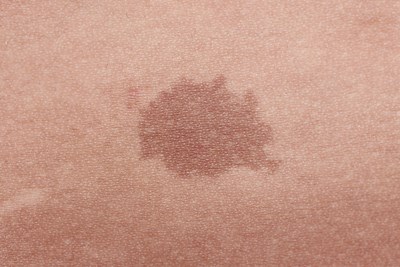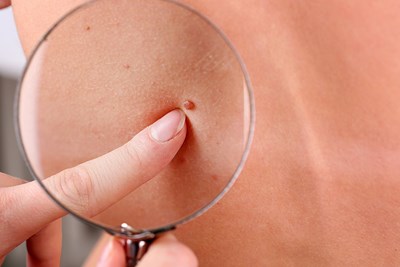Just about everyone has a birthmark -- a slight abnormality on the skin that is present from or shortly after birth. While many birthmarks are no more than they seem, some birthmarks can be indicative of particular disorders and even cause problems in and of themselves. Don’t panic just yet -- here are a few tips about how to know if your baby’s birthmark is something to worry about.
Hemangiomas
Strawberry hemangiomas are (generally) small red bumps. They are considered vascular birthmarks, because they are formed by the blood vessels. In fact, strawberry hemangiomas are technically a form of tumor. They may enlarge during the first few years of life, but many children find their strawberry mark has faded to a little more than a discoloration within their first decade. Although they aren’t necessarily a danger in and of themselves, strawberry hemangiomas do have the potential to become problematic.
First of all, it is possible for them to become open sores, particularly if they are quite large or placed in areas such as the hand (frequent use) or head (brushing and combing). Furthermore, hemangiomas near the eyes may inhibit vision, those near the mouth may make feeding difficult, and those on the throat may disrupt breathing. Depending on their location, they may cause other varying issues. Additionally, more extensive tumors may be referred to as cavernous hemangiomas, depending on the size and types of veins involved. In any case, most experts recommend a visit to a specialist to see if something should be done regarding your baby’s hemangioma.
Harbingers of Disease
In some instances, particular birthmarks or particular characteristics of birthmarks can be indicative of the presence of an underlying disorder. For example, cafe au lait marks, named for their resemblance of spilled splotches and coffee-with-milk coloring are normally quite harmless -- even large ones. If your baby exhibits more than six of these particular markings, however, it may be suggestive of the presence of neurofibromatosis or another genetic condition. Ask your doctor to perform tests.
Port wine stains are reddish, vascular marks that range in size from very small to encompassing a large part of the face. While these can be emotionally scarring because of their impact on appearance, they can also be indicative of Klippel-Trenaunay syndrome, characterized by tissue and bone overgrowth, or Sturge-Weber syndrome, characterized by neurological issues. These are both very rare, but you should nevertheless talk to your child’s pediatrician about the appropriate steps to take.
A congenital nevus is similar to a mole, but significantly different. Rather than a small round spot, it is instead an abnormal shape and can be quite large. It’s often dark brown in shading, commonly on the top of the head or front or back of the torso. Although largely undisturbing, the presence of congenital nevi may mean that your baby may be more likely to develop melanoma or other skin cancers as an adult. Take appropriate caution when staying out of doors, and encourage your child to keep an eye on any moles or marks that develop or change over time.



